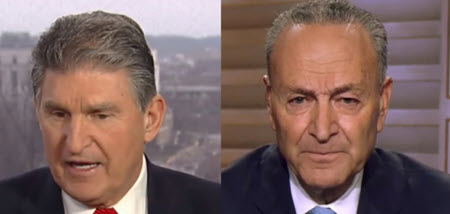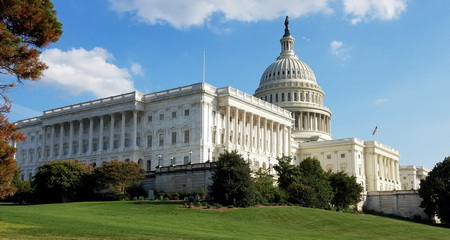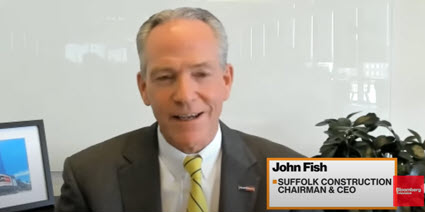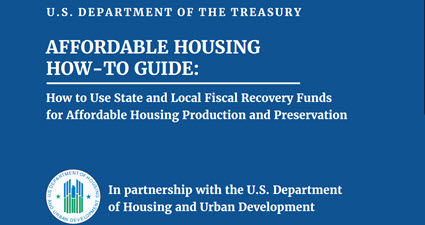 An unexpected agreement announced Wednesday night between Senate Majority Leader Chuck Schumer (D-NY), above right, and Sen. Joe Manchin (D-WV), left, on a $790 billion reconciliation proposal includes $14 billion in increased taxes on carried interest and a 15% corporate minimum tax—in addition to $369 billion in climate spending that affects “clean energy” measures important to commercial real estate.
Senate Democrats are hoping to pass some version of the Schumer-Manchin language on a party-line vote before the upper chamber begins its summer recess on Aug. 8. (Senate Democrats’ joint statement and one-page bill summary, July 27 | Committee for a Responsible Federal Budget, July 28)
Legislative Details
An unexpected agreement announced Wednesday night between Senate Majority Leader Chuck Schumer (D-NY), above right, and Sen. Joe Manchin (D-WV), left, on a $790 billion reconciliation proposal includes $14 billion in increased taxes on carried interest and a 15% corporate minimum tax—in addition to $369 billion in climate spending that affects “clean energy” measures important to commercial real estate.
Senate Democrats are hoping to pass some version of the Schumer-Manchin language on a party-line vote before the upper chamber begins its summer recess on Aug. 8. (Senate Democrats’ joint statement and one-page bill summary, July 27 | Committee for a Responsible Federal Budget, July 28)
Legislative Details



This week’s flurry of key economic data offered mixed signals about the state of the economy and whether the Federal Reserve’s interest rate increases can slow inflation without causing a significant increase in unemployment—a “soft landing” that could prevent a full-blown recession before the mid-term elections. (The Hill, July 28)
Economic Slowdown & Inflation
GDP & Jobs


Roundtable Chair John F. Fish (Chairman & CEO, Suffolk), above, was interviewed July 27 on Bloomberg Markets: Americas about current economic conditions and real estate. He commented on the industry’s challenges, including fractious land use policy, supply shortages, and cost drivers. National economic conditions affecting CRE and the Fed’s monetary policies will be a focus during The Roundtable’s Fall Meeting on Sept. 21-22 in Washington, DC.
# # #

The Biden administration issued new guidance this week that gives local and state governments greater flexibility when using their share of $350 billion in COVID-19 federal relief funds for affordable housing. The changes are in line with the administration’s recent Housing Supply Action Plan, which aims to boost the supply of affordable housing in communities throughout the nation. (Treasury Dept. news release, July 27 and Roundtable Weekly, May 20)
Expanded Use of Pandemic Funds
How-To Guide

Multifamily Response
In conjunction with the study’s release, the website www.WeAreApartments.org breaks down the data by each state and 50 key metro areas.
# # #

The North American Securities Administrators Association (NASAA) is seeking public comment on proposed revisions to its Statement of Policy Regarding Real Estate Investment Trusts. The July 12 proposal would update the conduct standards for brokers selling non-traded REITs with references to the SEC’s Best Interest conduct standard. (NASAA news release, July 12 and Investment News, July 25)
Proposed Changes
Potential Impact

Final comments on NASAA’s 44-page request are due by Aug. 11, 2022. The Real Estate Roundtable is working with several other organizations on a coalition response. Roundtable members can direct their comments and questions to Roundtable Senior Vice President Chip Rodgers or call 202-639-8400.
# # #